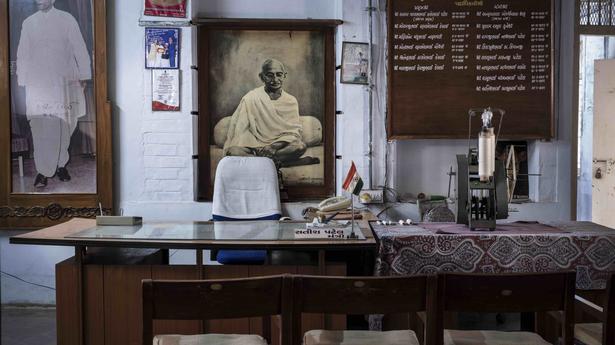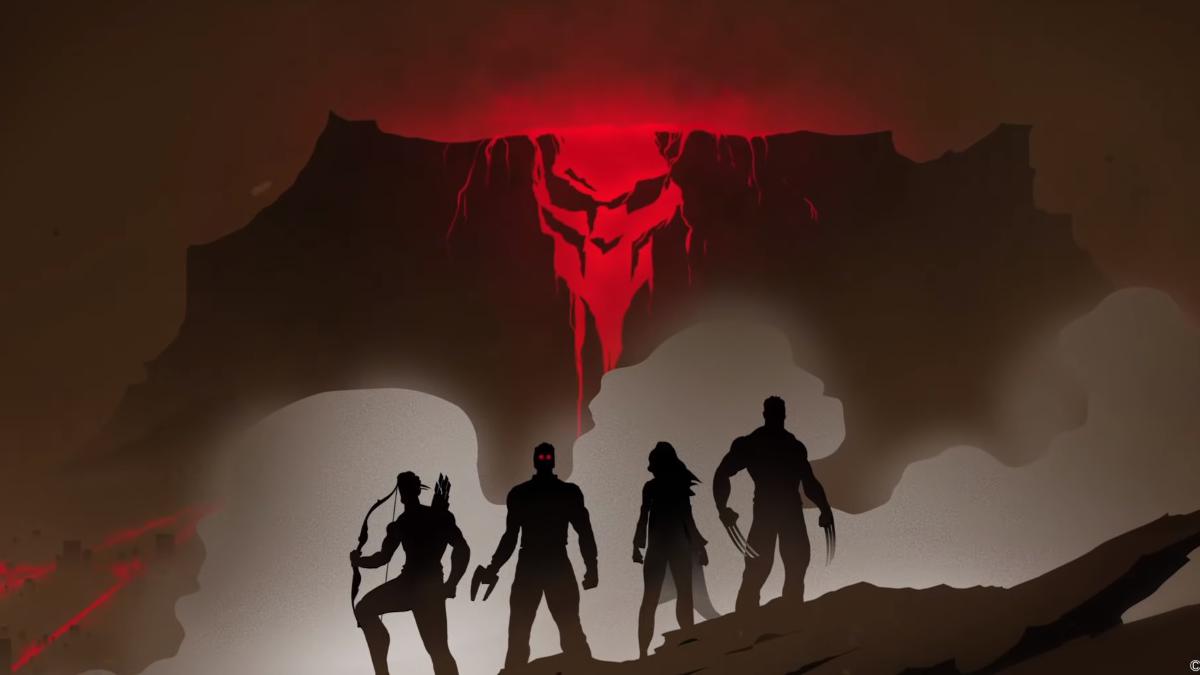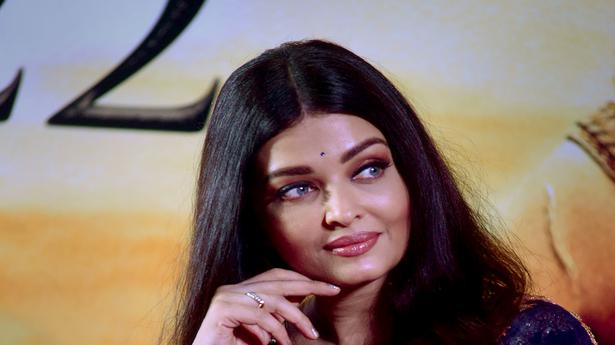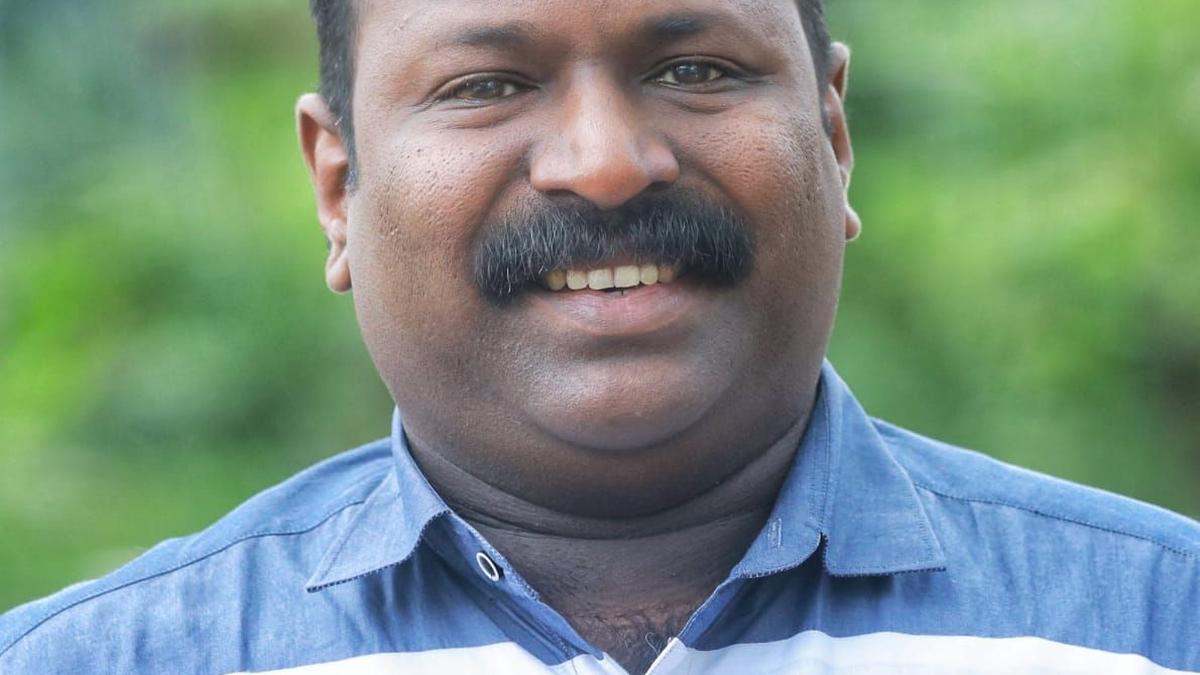The artworks aim to provide the viewer with an understanding of the afterlife of Gandhi
The artworks aim to provide the viewer with an understanding of the afterlife of Gandhi
No doubt Gandhi is one of the most iconic figures of post-Independence India, but what do his images really mean to us?
Artists Anuj Ambalal, Ashok Ahuja and Sharad Sonkusale attempt to uncover some of these narratives in their exhibition, ‘Bapu in Three Voices’, showing at Gallery Espace in New Delhi. With a mix of image and text, documentation as well as interpretation and vision, the artists contemplate in their own way, what Gandhi means to them.
Ahmedabad-based Ambalal’s photographs focus on manifestations of the Mahatma in contemporary times — the large framed Gandhi behind the absent ‘babu’s desk’; replicas of his personal effects languishing in glass cases in museums; shelves in a printing press filled with unsold stacks of his books; and so on. “References to Bapu’s ideology have been encrypted into these images to explore a narrative woven with humour, irony and admiration,” says Ambalal.
Sharad Sonkusale uses rice paper sheets and ink to give the viewer a peek into the Mahatma’s mind.
For painter Sonkusale, it was more about imagining the vulnerable or all-too-human side of the father of the nation. His mixed-media canvas, using rice paper sheets and ink, envisions the Mahatma’s account of his childhood and early youth as chronicled in his autobiography, The Story of My Experiments with Truth. The artist has meticulously typed out paragraphs from the book, with other interventions — a passage marked out in red ink, crisscrossed paragraphs, or another covered with a half-circle in black ink. This ‘working draft’ of Bapuji’s writing, in a sense, though conjectured, gives a peek into his mind, doubts, confusions and all.
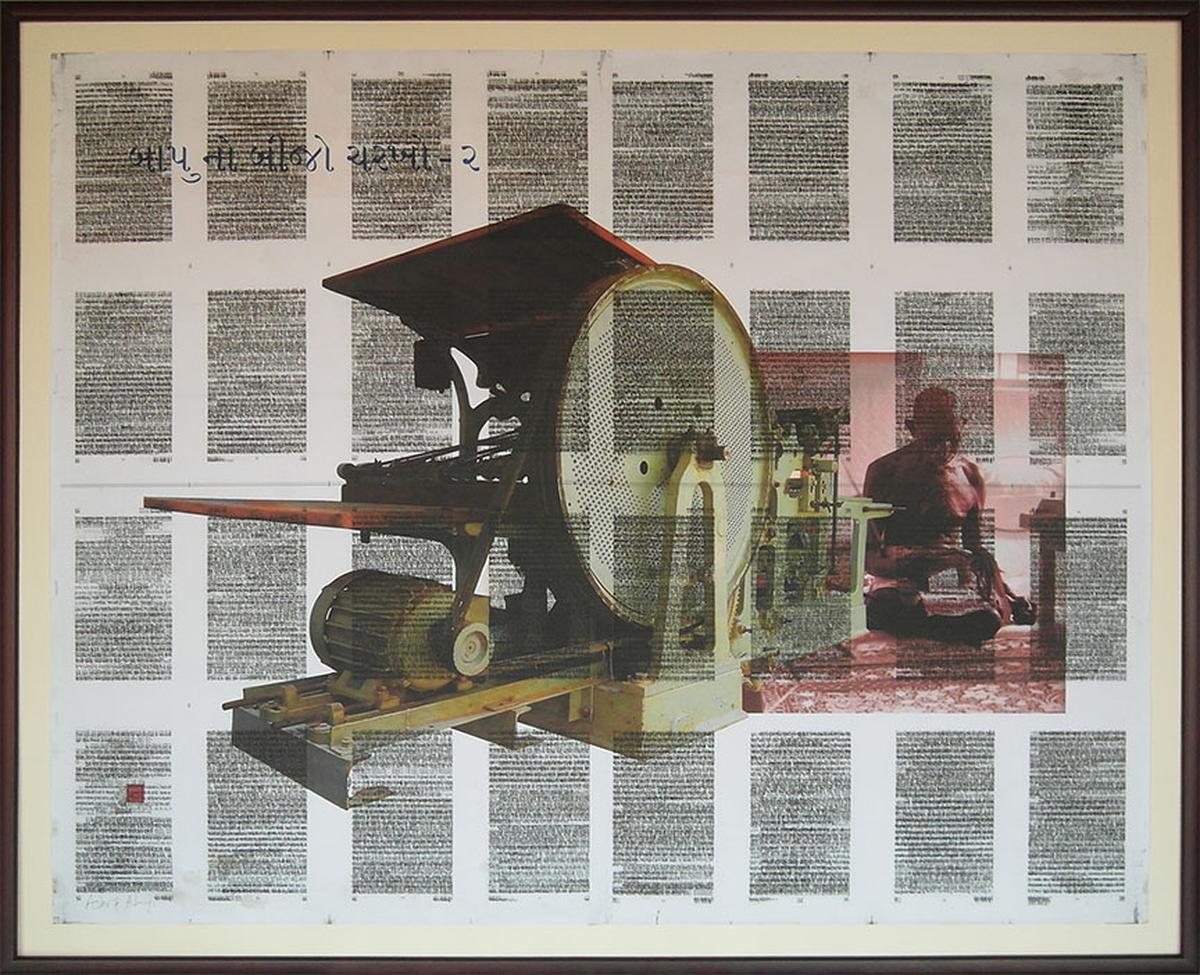
‘Bapu’s Other Charkha’ by Ashok Ahuja.
In a different vein, Ahuja’s prints too cast the spotlight on the words of Gandhi, a prolific writer for whom the press was no less important a tool in his arsenal of satyagraha than the charkha. The works, says Ahuja, are “a tribute to a man who astoundingly, with simple black ink, was able to dispel the darkness and spread light, to share with the people of his country his vision of a bright new world.”
The artworks on display thus focus on Gandhi’s inheritance as preserved in museums and institutions, and the books he wrote, to provide the viewer with an understanding of the afterlife of this remarkable figure. What he stood for continues to hold relevance in today’s deeply divided world, and may help to serve as a reminder of what can be achieved through a belief in humanity.
‘Bapu in Three Voices’ will show at Gallery Espace till September 12, 2022.
The writer is a critic-curator by day, and a creative writer and visual artist by night.


